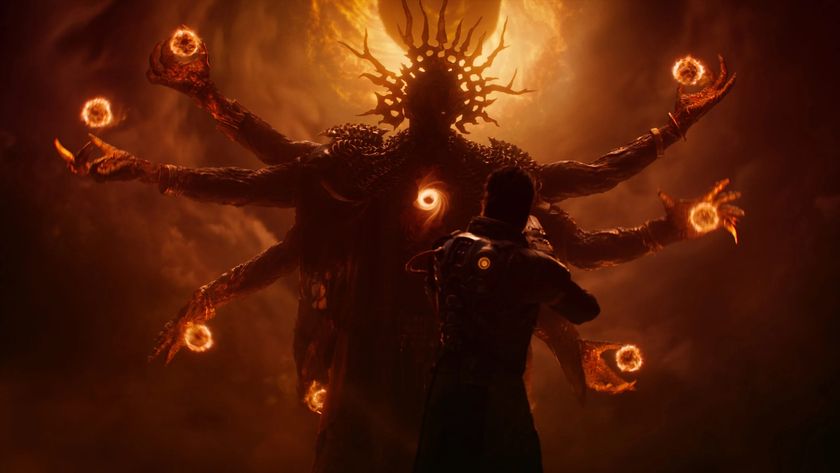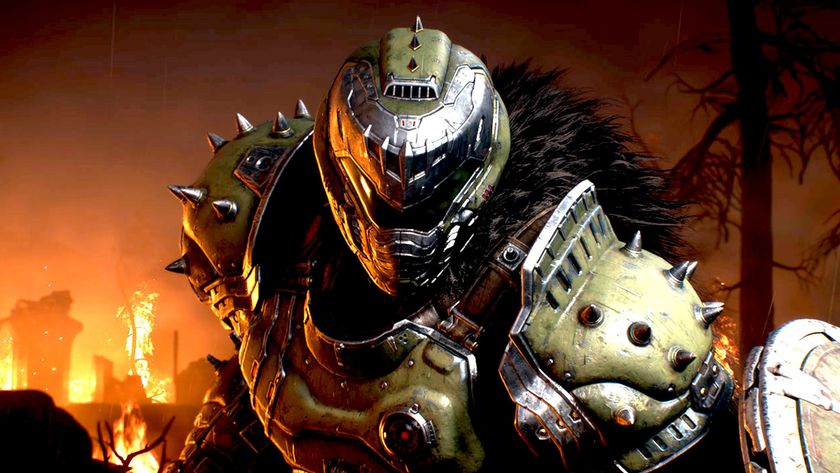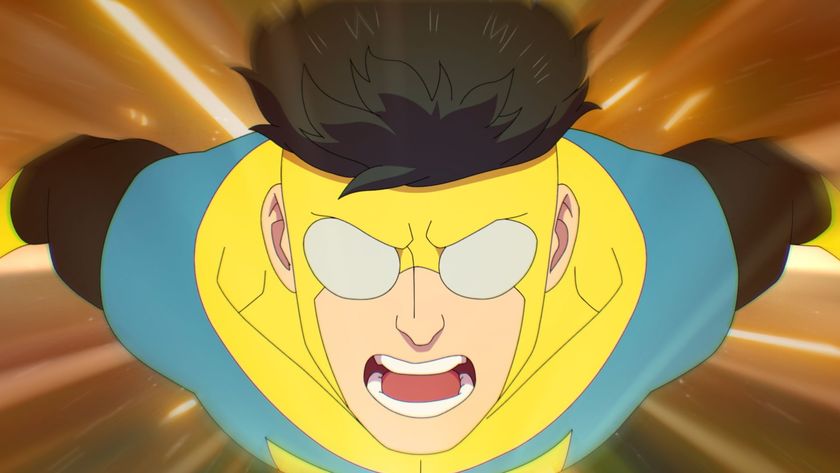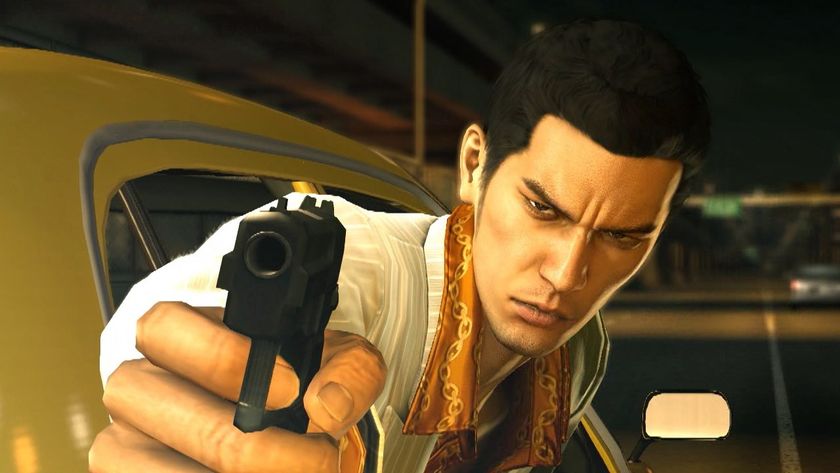Stop lying to yourself: Old-school gaming is not what you remember
Remember how great old-school shooters were? Remember how rampant, non-stop and utterly balls-removed-from-trousers-and-placed-resolutely-against-the-wall they used to be? Remember Doom, with its endless hordes of ravaging hellspawn, just begging to be mowed down with all of those gigantic weapons of handheld mass-destruction? Remember what a whirling, strafing, gore-drenched, bullet-spewing, one-man army you were back then?
Well I don’t, and I played a whole load of Doom and Wolfenstein 3D back in the mid-‘90s.
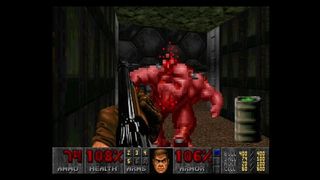
What I do remember is a lot of nervous, plodding exploration, punctuated by bursts of intense danger. I remember a lot of tense, seemingly endless, borderline confounding treks around vast, labyrinthine environments, half of my brain trying to decipher how I could possibly reach the big gun teased on the other side of the impossible architecture ahead of me, the other praying I was right in thinking I’d killed everything in the immediate vicinity. Because I knew that the dwindling, rapidly depleted ammo count for my more powerful guns wasn’t up to a big assault. It rarely was. That stuff was reassuring to have in my inventory, but good God, I was buggered if I was going to fire it away willy-nilly.
You see the common perception of ‘old-school’ games that’s being touted around and popularised on the modern internet is 90% bullshit, and we need to stop using it as a convenient—yet false--annotation for certain types of gameplay. Because the problems with the lazy usage of a term so binary--yet ironically fuzzy--in its definition go beyond simple matters of misremembered game design. They bleed into everything, pooling and clotting around the ankles of gaming’s entire heritage and development, and creating sticky, completely inaccurate--and sometimes dangerously disparaging--perceptions of the medium and its achievements.
Let’s stick with shooters for a minute. The present, default use for the term ‘old-school’ when describing FPS is to denote a game as having fast-paced, anarchic, near-constantly empowering action, and an irreverent, often blackly comic tone. As mentioned above, that really doesn’t apply to Doom. Or Wolfenstein. Or a whole lot of other games that so frequently have the term clumsily stapled to them. So what meaning does the descriptor actually have, and why does it exist?

In its current format as a generic plaudit for fast-paced, somewhat freeform FPS, it strikes me that the term is effectively a pseudo-educated reskin for “It’s not like Call of Duty”. Because really, CoD is the poster-boy for linear, straightforward, highly scripted first-person shooter gameplay. And since the mass market appeal of its gameplay model and presentation-style began to dominate the genre, those of us preferring something freer and more improvisational have needed a spiritual rallying point when lambasting ‘the new ways’. Arguments are always easier to make when you have a figurehead for some supposed rightness, and nostalgia makes one hell of an easy in-road to idealisation.
Thus, we created an exaggerated, archetypal antithesis to Call of Duty and its imitators in our minds: a scrappy, unpolished short-hand for the type of gameplay we preferred. And then inevitably, many of us tied its generic, inaccurately sketched form to the games of yore, however inappropriately. Because, as is always the way with delusional self-assertion, everything was always better ‘back then’, before the current rubbish thing du jour happened. But the thing is, Call of Duty’s restrictive, semi-interactive gunplay only really became dominant around 2007 – 2009. And the real kicker? The franchise’s gratuitous, explosive, ceaselessly destructive focus on instantly gratifying carnagetaculars now shares more in common with the imaginary values of ‘old-school’ shooters than Doom ever did.
Sign up to the 12DOVE Newsletter
Weekly digests, tales from the communities you love, and more
So, the intricacies of that particular group-hallucination dealt with, let’s move on to more general, wider-reaching problems with this terminology. Aside from using it to twist the history of gaming into a bluntly-defined, self-serving, made-up narrative, we also do a massive disservice to some of the most innovative and forward-thinking games of the current era. As well as inventing deep, convoluted perceptions of what ‘old-school’ means, we’re also using shallow, superficial interpretations of the idea to limit our appraisal of complex works.

Yeah, I’m talking about pixel art.
I’ll side-step any discussion of sprite-work’s current ubiquity as a positive or negative, as hopefully the next paragraph or so will clear up my position. Instead, I want to look at how it shapes our immediate responses to the games it appears in, and how the idea of ‘old-school’ again throws a spanner in the works. There are a lot of pixelly, 2D platformers and adventure games coming out of the indie space right now. A lot of great ones. And between their look and their lack of a third dimension, they often earn ‘old-school’ as a primary adjective long before their gameplay is discussed more deeply. But are they, really?
Think about Spelunky. 2D, pixelly in its original form, and hard as concrete. Old-school right? Well no, because nailing it to the era of 8 and 16-bit platforming entirely ignores its game-changing innovations in random level-generation and roguelike, freeform adventure gameplay, not to mention the complexity of its underlying systems. Similarly, something like the excellent Rogue Legacy can be easily thrown into the Ghouls ‘n’ Ghost camp if we’re using ‘old-school’ short-hand to appraise its aesthetic themes and superficial control systems. But in reality, RL’s structure, scope and conceits make it far more akin to a side-scrolling Dark Souls.

Ditto Hotline Miami. Old-school, top-down shooter, yeah? It’s Contra 3’s overhead levels crossed with Ikari Warriors, crossed with the original Grand Theft Auto. Except that it’s not. It’s actually a deep-as-Hades reinvention of the stealth, shooter and even puzzle and RTS genres, dressed up in a pastel-toned ‘80s shoulder-pad suit.
There’s no problem at all in initially describing Hotline as a top-down shooter. That is one undeniable element of what it is. But to add the ‘old-school’ modifier to the start of that description simply because of its aesthetic and difficulty--'all old games were crazy-hard' being another self-congratulatory fiction, of course--is to immediately preclude further discussion of the game’s delicious, fresh, and utterly unique layers of dextrous, modern depth. The game looks as SNES as you like in screenshots, but its design could only have come from a modern perspective.
And one last point leading on from that, before I leave you to go about your business. By doing this stuff, by doing all of the things mentioned above when we discuss games old and new, we utterly whitewash over the real story of video games. The binary nature of our definitions of ‘old-school’ and ‘modern’ implies that a void exists between the past and the present. And that’s a total fiction.
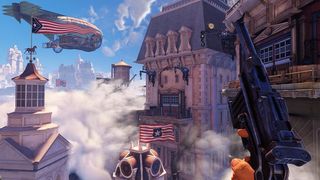
As I say rather regularly, games are an iterative medium. As much machine as art, they evolve by building their mechanisms and systems upon the blueprints of what has gone before, tweaking here, streamlining there, and finding more powerful and efficient ways of doing the good stuff while drilling out the bad. Just as a modern vacuum cleaner or car is actually the more evolved descendent of its precursors, so too are modern games part of an unbroken, flowing line of organic evolution. Modern developers didn’t spring out of pods, fully-formed and independent of any previous influences. Their paths to professional game design are paved with the games that were released along the way. There is no such thing as a ‘modern game developer’.
BioShock Infinite is probably the last generation’s most extravagant shooter in every applicable sense of the word, but it’s also an exploded evolution of BioShock. BioShock is an iteration of System Shock 2. System Shock 2 runs hand-in-hand with Half-Life, and in turn probably influenced Deus Ex. Before SS2 and Half-Life, the original System Shock was pioneering the ideas that both games later expanded upon. And before that there was Quake. Which springboarded off from Doom. Which isn’t the ‘old-school’ carnage fest you might think it is. There is no void. There is no deadzone between the past and the present. There are no absolutes. Until recently, Call of Duty was still built using an upgraded version of the Quake 3 engine.

The bigger picture is a lot less black and white than you think. There is no ‘now’ and ‘then’, There is no ‘old-school’ and ‘modern’. There are just games. As Dustin Hoffman pointed out in I Heart Huckabees, it’s all connected. So let’s look at games for what they really are, individually, and fully explore what each one gives us. To fit them into convenient, easily defined holes, we’re going to have to keep cutting bits off and sticking other bits on where they shouldn’t go. And that kind of Frankensteinian thinking leads only to the kind of giant monster-feet that we’re all already tripping over.


